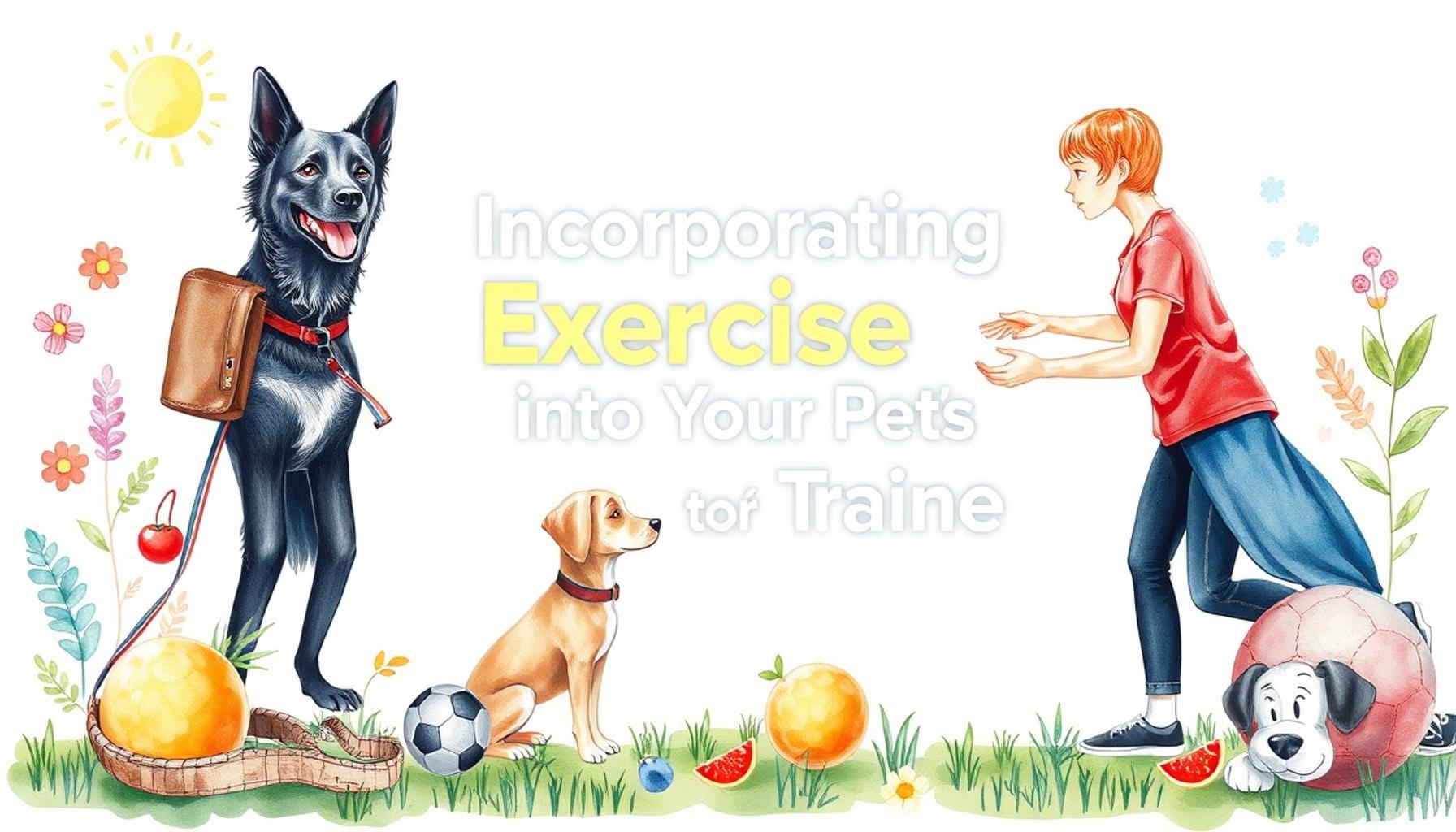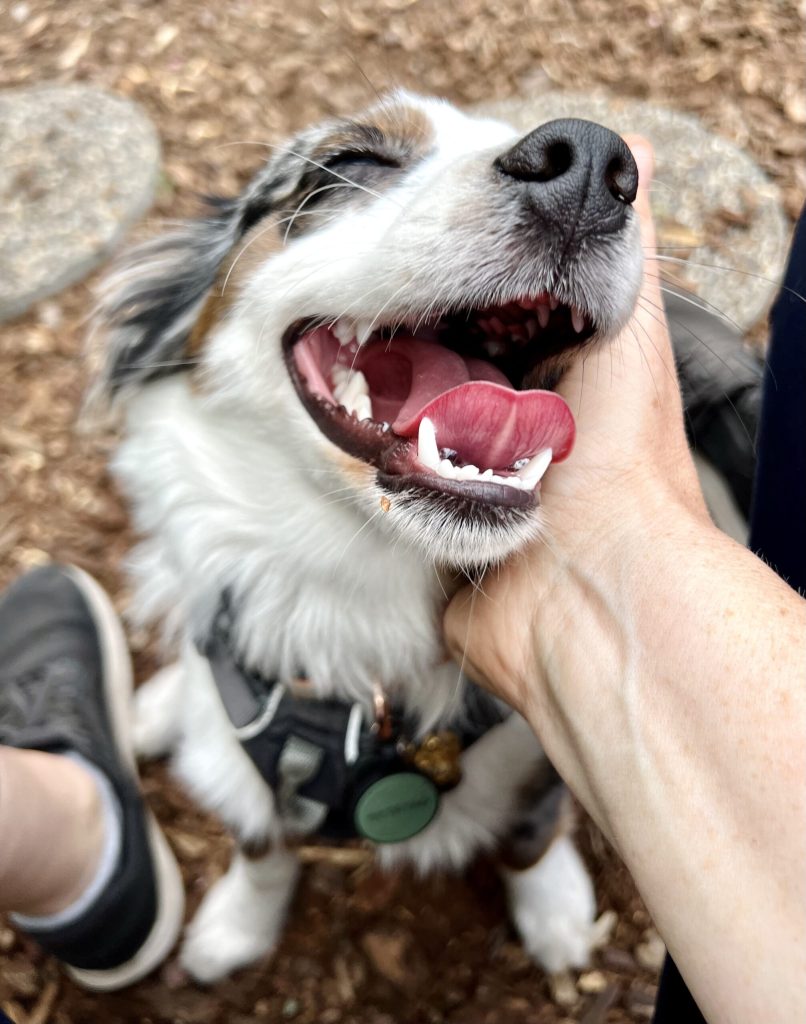Incorporating Exercise into Your Pet’s Training Routine

The Importance of Exercise in Pet Training
Incorporating exercise into your pet’s training regimen can yield impressive results, benefiting both their physical health and mental well-being. When pet owners think about training sessions, they often focus solely on commands and discipline. However, the physical aspect of exercise is just as pivotal. Studies indicate that regular exercise can significantly influence a pet’s capacity to learn, retain information, and display improved behavior. Ultimately, an engaged and physically stimulated pet is more likely to be a well-behaved one.
One compelling reason to consider exercise in training is the profound impact it has on a pet’s focus. Engaging in physical activity reduces hyperactivity and distractibility, allowing for a more concentrated training session. For example, dogs that undergo a brisk walk or play fetch before training are more likely to sit attentively and respond to commands swiftly. This connection can be likened to how children perform better in school when they’ve had time to run around and burn off excess energy.
Moreover, there are significant behavioral benefits associated with combining exercise and training. Many common issues such as excessive barking, jumping, or digging stem from pent-up energy and anxiety. By providing your pet with adequate opportunities to expend energy through play, you can reduce the likelihood of these behaviors manifesting. For example, a dog that runs alongside its owner while jogging may exhibit less restlessness and a lower tendency to engage in destructive behavior at home.
Additionally, bringing together exercise and training can strengthen the bond between you and your pet. Training methods that include fun physical elements create a positive atmosphere. Imagine a scenario where you teach your dog to follow commands like ‘jump’ or ‘weave’ through cones during a game of agility. Not only does this foster cooperation, but it also reinforces trust and mutual enjoyment, making every session a rewarding experience for both parties.
Implementing exercise into your training routine doesn’t require extensive time commitments or expensive equipment. Here are a few creative and straightforward ideas:

- Interactive Toys: Utilizing puzzle toys that require your pet to move around can be an excellent way to stimulate both their body and mind. Look for toys that dispense treats while they figure out how to interact with them.
- Short, Fun Training Sessions: Instead of long, exhaustive training periods, opt for short bursts of training where you alternate between teaching commands and engaging in exercise. For instance, after practicing ‘sit,’ you could reward your pet by throwing a ball for them to fetch.
- Agility Drills: You can easily create a mini-obstacle course in your backyard using items you already have, like cones, chairs, or even hula hoops. This not only promotes physical activity but also instills discipline as your pet navigates through the course following your guidance.
Ultimately, the key to a successful training regimen lies in making it enjoyable for both you and your pet. By skillfully intertwining exercise with training techniques, you can design sessions that foster a sense of fun and adventure. This approach doesn’t just create a happy, healthy pet; it lays the groundwork for a lifelong partnership filled with joy and companionship.
DISCOVER: Click here for essential tips on preparing for pet adoption
Enhancing Learning Through Active Play
When it comes to dog training, many pet owners mistakenly believe that obedience and command proficiency are purely about repetitive drills and structured lessons. However, there is growing evidence that incorporating exercise into training routines can significantly enhance a dog’s ability to learn. Engaging in physical activities before or during training sessions improves attentiveness and response to commands. Research conducted by canine behaviorists shows that pets perform tasks more effectively when they first expend some of their pent-up energy through exercise.
The reasoning behind this phenomenon is tied to a dog’s natural instincts. Just like humans, dogs thrive on routine, but they also crave stimulation and movement. When their bodies are active, their minds are more alert. By beginning training with a brisk walk or a game of tug-of-war, pet owners can prime their dogs’ brains for learning. Moreover, studies indicate that dogs that receive regular physical activity are not only happier but also demonstrate a greater ability to concentrate during training sessions. Think of it as warming up before tackling a big mental challenge; this not only heightens focus but creates a more enjoyable training experience.
It’s also important to consider the age and breed of your dog when designing an exercise-inclusive training regimen. Large breeds, for instance, might need longer periods of exercise, while smaller ones can benefit from shorter but more frequent bursts of activity. This approach allows for a tailored training program that accounts for individual needs, ultimately leading to a more successful outcome. For instance, a high-energy breed like a Border Collie may thrive on agility exercises, while a more laid-back breed like a Bulldog may enjoy leisurely walks interspersed with command practice.
Motivating Your Pet Through Movement
Incorporating exercise into pet training not only boosts learning potential but also fosters motivation. Pets often respond positively to varied activities, making training feel less monotonous and more like a game. Here are several ways to merge exercise with training:
- Frequent Short Play Sessions: Instead of a single long training block, break training into several shorter, dynamic segments. Mix exercises like sit or stay with short play intervals, rewarding your pet for all their efforts.
- Training Walks: Combine outdoor exploration with training commands. Practice “heel” during your walks or introduce random sit/stay commands. This not only helps with training but also maintains both you and your pet’s energy levels.
- Engagement through Retrieval Games: Playing fetch is an excellent dual-purpose activity. Teach your pet to retrieve a specific item first before reinforcing commands. This keeps your dog engaged while providing necessary physical exercise.
By infusing exercise into training sessions, you create a routine that enhances learning and maintains the dog’s interest. The ultimate goal is to form a routine that is not purely transactional but rather a shared experience that enhances the bond between you and your pet.
| Advantage | Description |
|---|---|
| Improved Obedience | Incorporating exercise helps increase focus and reduces distractions, leading to better training outcomes. |
| Enhanced Bonding | Engaging in physical activities together strengthens the relationship between you and your pet, fostering mutual trust. |
| Physical Health Benefits | Regular exercise helps maintain a healthy weight and prevents obesity, which can lead to serious health issues in pets. |
| Mental Stimulation | Exercise provides both physical activity and mental challenges, crucial for a pet’s cognitive development. |
Exercise is not just a benefit for humans; it profoundly influences your pet’s training journey. Utilizing activities such as retrieval games or agility challenges can dramatically enhance your pet’s decision-making skills and promote a sense of accomplishment. These activities can also cut down on undesirable behaviors linked to boredom.Additionally, exercise through structured training sessions can facilitate faster learning periods and positive behavior reinforcement. Engaging exercises can be tailored to fit specific training goals, such as teaching commands or tricks, maximizing both engagement and effectiveness in your routine. The more active and stimulated your pet is, the more likely they are to respond positively to training efforts, leading to a more rewarding experience for both of you.As you explore these advantages, it’s essential to find activities that cater to your pet’s specific preferences and needs. This tailored approach will not only keep your sessions interesting but will also help maintain your pet’s enthusiasm for training.
DISCOVER MORE: Click here to learn safe interaction techniques for your puppy
Utilizing Positive Reinforcement Through Activity
Another effective method for incorporating exercise into your pet’s training routine is the application of positive reinforcement through physical activities. Positive reinforcement revolves around rewarding desired behaviors, and coupling this with exercise can lead to lasting learning experiences. Rather than solely relying on treats, consider using engaging physical activities as a form of reward. For example, when your dog successfully follows a command, a brief play session or a run in the yard can serve as an irresistible incentive, further motivating them to perform.
The practice of using exercise as a reward can increase your pet’s enthusiasm during training sessions. It links training to enjoyable experiences, shifting the focus away from repetitive commands to a more dynamic and enjoyable interaction. This concept is particularly effective for high-energy breeds that require a considerable amount of physical activity to maintain focus. Breeds like the Labrador Retriever or Jack Russell Terrier, for instance, may become bored and disengaged if not mentally and physically stimulated during training, which can lead to behavioral issues down the line.
Incorporating Agility Training
One excellent way to merge exercise with training is through agility training. Set up simple obstacle courses in your backyard or local park, utilizing items like cones, tunnels, or hoops. This form of training not only exercises your dog’s body but also challenges their mind, enhancing problem-solving skills and obedience. As your pet learns to navigate the course, you can incorporate commands such as “jump,” “weave,” or “stay,” teaching them to associate these commands with different actions while keeping them physically active.
Inspire excitement and a sense of competition by timing your dog’s run or setting up challenges for them to complete within a certain time. Engaging in this type of activity can significantly improve a dog’s motivation and focus, transforming training sessions into a series of fun and rewarding challenges that keep both owner and pet engaged.
Participation in Canine Sports
As a further step, consider involving your pet in canine sports. Activities like flyball, frisbee, or competitive agility not only provide fantastic forms of exercise but also reinforce training in a social setting. This engagement enhances command recognition as your pet learns to respond to cues amidst distractions. Moreover, participating in such sports allows owners to connect with other dog enthusiasts, sharing experiences, advice, and possibly even forming lasting friendships.
- Flyball: This relay race between teams of dogs requires them to jump over hurdles, trigger a spring-loaded box that releases a tennis ball, and race back over hurdles while carrying the ball. It can be an excellent way to practice commands like “go” and “return.”
- Frisbee: An affordable, fun game that challenges your dog to leap and catch while refining their “come” and “drop” commands, promoting agility and athleticism.
- Obedience Trials: Engaging in structured competitions to test your canine’s obedience can serve to motivate training while offering a physical challenge.
Overall, the amalgamation of physical activities with training not only nurtures a pet’s love for learning but also significantly enriches the bond between owner and pet. As this bond strengthens, the pet’s responsiveness to training commands can improve, resulting in a well-mannered and happy companion. Embracing this approach may just transform your training sessions into the highlight of your pet’s day.
DIVE DEEPER: Click here to learn more about puppy socialization
Conclusion: The Transformative Power of Exercise in Pet Training
Incorporating exercise into your pet’s training routine can fundamentally enhance their learning experience and overall well-being. By combining physical activity with positive reinforcement, you not only motivate your pet but also create a dynamic environment that fosters engagement and enthusiasm. Using techniques like agility training and participation in canine sports can transform training sessions into exciting challenges, promoting both physical fitness and mental stimulation. This holistic approach not only nurtures obedience and command recognition but also deepens the bond between you and your furry companion.
Moreover, an active training routine helps mitigate potential behavioral problems, particularly in high-energy breeds that thrive on stimulation. Recognizing the importance of integrating exercise into your training strategy provides both immediate benefits and equips your pet with essential skills for the future. Not only will you witness improved focus and responsiveness, but you may find that your training sessions become cherished moments filled with joy and companionship.
As you embark on this journey of discovery, consider exploring various playful activities that you and your pet can enjoy together, solidifying a lifelong bond rooted in trust and training. The adventure of integrating exercise into your pet’s training routine awaits—making every moment spent together not just productive, but also a delightful experience for both of you.


